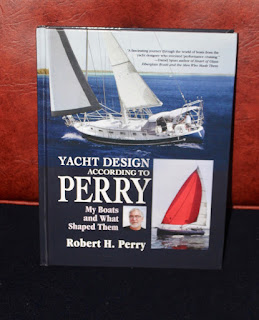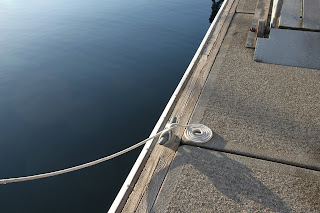Manning the Helm on My First Day Back Sailing on the Puget Sound
It's been a long time, too long in fact. So many changes to span the last three or four years, but we are back to sailing, at least as a team. Only this time we have a new sailboat; our previous sailboat was a bit shy on space for full-time living, so we sold Hana, our 30' Vashon Sailboat, and purchased Glamorgan, a 40' Valiant Sailboat.
Glamorgan at Port Ludlow, WA
I ended up stationed away from the Pacific Northwest, and my husband wanted to live on a sailboat closer to his work, so that meant an optimized layout, and larger beam. Additionally, we'd like to have cruising and potential offshore sailing in our future, which meant the top of my list was stability. Eventually we settled on a 40' Valiant, circa 1976, named Glamorgan. The Valiant 40' is an incredible piece of engineering, and anyone seriously interested in sailboat design would find the book "Yacht Design According to Perry: My Boats and What Shaped Them" by Robert H. Perry a fascinating read.
A Preview of the Book (Courtesy of Amazon) is Available Here
During the time I was stationed away from the PNW, my husband worked on getting Glamorgan in semi-running shape. He purchased Glamorgan from an estate sale where she was on the hard. She's had two owners before us, and she was in need of some updates and upgrades. According to our rigging team from Northwest Rigging, "It's like stepping into a time capsule." As such, for her first year and a half, she remained on the hard in Anacortes, WA getting work done.
During her time in Anacortes we were able to get a new Volvo D2-40, three blade folding max prop, new holding tank, new standing and running rigging, new chainplates on completely replaced bulkheads, rewiring of the mast with new B&G wind instruments, and various other small items. In February of this year she was finally re-launched and able to motor from Anacortes to our new home slip at Foss Harbor Marina in Tacoma, WA. Our new marina has the advantage of much slower currents which makes leaving and returning to port much easier than in Bremerton, WA.
With live aboard privileges and a wife stationed 3,000 miles away, that meant lots of time for smaller projects to get accomplished on the boat. The first was the installation of solar panels to take advantage of the long sunny days in the PNW (just kidding, but the solar panels help meet our electrical needs while underway).
Go Power Solar Panels Installed on Dodger
Another project was the refit of the refrigerator/freezer. The one installed was original, and the worn engine driven compressor no longer functioned with the new engine and the holding plates put a much deeper power draw on our house batteries than we could safely support on solar panels.
All this work resulted in getting a sailboat in working order back on Puget Sound. We hope to share many trips and adventures with you in the future. And if you'd like a post specifically regarding any of the repair work mentioned above, please post in the comments and I will put together a specific post dedicated to a more in-depth coverage of the repair and upgrade efforts.
The next post will be dedicated to getting our dogs used to the new boat and taking them out sailing. There will be several lessons learned, as well as our recommendations for getting older dogs comfortable with being on a sailboat. Until then, keep sailing; we hope to see you out there.
Glamorgan on the Puget Sound














